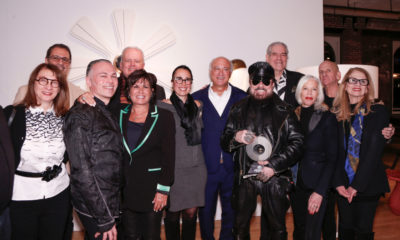Archived in VM+SD's Cincinnati offices are complete, bound issues of the magazine dating back to 1895. (Its forebear was called The Show Window — “A Magazine for The Merchant.”) The founding editor was a former salesman and self-proclaimed display expert named L. Frank Baum.
That's right! All those images — munchkins and wicked witches and ruby slippers — came out of a mind focused on store windows and merchandise displays. (How many colleagues told Baum: “What are you thinking? Yellow brick is so 1880s!”?)
The origin of his enchanted land is well known: He saw the letters O-Z on his file cabinet. Could they have stood for Ohrbach's and Zions Co-op? Could the scarecrow and tin man have been Baum's interpretations of contemporary mannequin types? Was the cowardly lion some GMM?
Winged monkeys? I don't want to know!
This industry has turned out a number of accomplished artists who've gone on to productive second careers in fashion, theater, interior design, literature. I've always insisted that our community is the most under-recognized group of creative artists in the country, although many do blast their way onto the public A-list. (Does the name Andy Warhol ring a bell? Vincente Minnelli?)
Advertisement
The New York Times Spring Home Design supplement (April 16, 2000) was filled with references to the giants of architecture and design: Eames, Mies van der Rohe, Starck, Hadley, Elsie De Wolfe, Sister Parish, Andrée Putman (who, by the way, is currently designing the flagship Connolly leather goods store in London). And there was this almost-throwaway story.
Socialite Brooke de Ocampo, redecorating her Upper East Side apartment, wanted a floor treatment similar to one she'd seen in the book Parish-Hadley: Sixty Years of American Design — stained “hot fudge and biscuit, in alternating bands two, three and four planks wide.”
Three painters told her she couldn't do that because her wood floors were already stripped to the skin. Then the insistent youngster strolled by Bergdorf Goodman and decided: “Whoever did that window can do my dining room!” Eventually, Bergdorf's display director, David Hoey, recreated the hot-fudge stripes, plus the lustrous peacock blue walls that are also pictured in the book.
His work for de Ocampo will become part of her new book, Bright Young Things. She told The Times that the book's message is “how much the bohemian informs my generation's conception of formal.” But a message only we can hear might be how slight the line is between creating something eye-catching yet comfortable in a domestic environment; and creating something eye-catching yet persuasive in a retail environment. The first might make the visitor take notice, then sigh. The second must make the visitor take notice, then buy.
No place like home? Not true. Go to the store!

 Photo Gallery7 days ago
Photo Gallery7 days ago
 Headlines2 weeks ago
Headlines2 weeks ago
 Headlines6 days ago
Headlines6 days ago
 Headlines1 week ago
Headlines1 week ago
 Headlines2 weeks ago
Headlines2 weeks ago
 Headlines1 week ago
Headlines1 week ago
 Designer Dozen2 weeks ago
Designer Dozen2 weeks ago
 Special Reports2 weeks ago
Special Reports2 weeks ago














